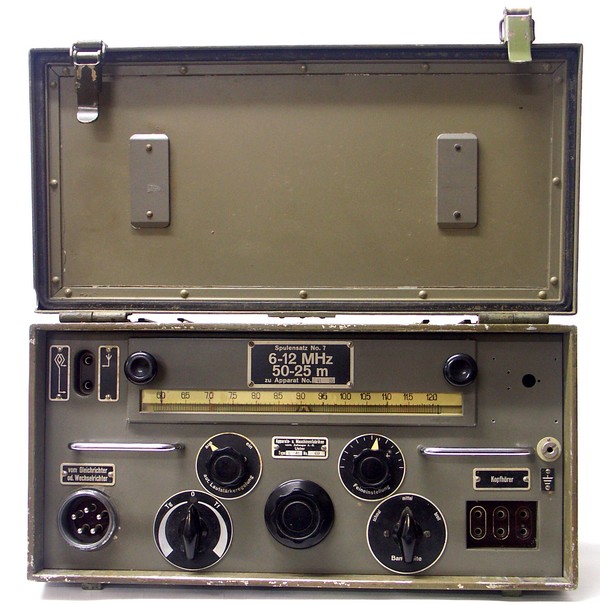|
überarbeitet am 6.1.2013
|
To replace the Tragbar Schwere Funkstation 18/25 as well
as the Fahrbar Leichte Funkenstation 19/25, Zellweger AG, Uster, developed a modern
shortwave station covering long- and shortwaves in the years 1938/40.
According to the concept of wireless station design in the thirties, which still
was followed by the Swiss Signal Troops then, the station should be installed in
a one axed cart, a limber. In Switzerland the station on such a cart got nicknamed "Gmüeswägeli",
it resembled to the carts of marketwifes selling vegetables...
As an alternative, the station could be used installed in a fortification or a command
post, for this purpose or for use in the mountains or in pathless terrain, the
station came in wooden transport crates with the designation Tragbar Schwere Funkstation TS40
(portable heavy station 40) with the same equipment as in the mobile station. In
favour of the carrying platoon, the rotable DF antenna and the 10 m telescopic mast
was left away.
 |
Wireless station with separate transmitter and receiver,
Transmitter TS40: 190 - 715 kHz and 1,5 - 4,5 MHz
Receiver: Zellweger E41
telegraphy CW (A1), telegraphy modulated (A2), telephony (A3)
pout A1 100W / AM 25 W
|
|
The "Tragbar Schwere Funkstation / TS 40" (portable heavy wireless station)
consists of the same components (transmitter, receiver, generator, rectifier,
inverter as the "Fahrbar Leicht" / FL 40.
The complete material (500 kg) could be distributed on 23 loads which could
be carried by a platoon of signallers on back frames or on six mules to be carried
up the mountains.
 |
 |
| The receiver of the wireless station FL40 was the Receiver Uster E41,
a single / partly double conversion receiver with battery valves and coil
sets for the different wavebands as found in the National HRO. |
The TS40 transmitter comes in a huge case with carrying
handles and ventilation holes at it's sides - it is portable, in the strict
meaning of the word: You can carry it...
The transmitter covers the longwave ranges 190-242 / 242-400 / 400-715 kHz and
the shortwave ranges 1500-2300 / 2300-3300 / 3300-4500 kHz, a crystal permits to
calibrate the set for 4000 kHz. |
The TS40 uses a 10m mast (consisting of seven detachable segments) for shortwaves
and a L-antenna erected between two 10 m poles for longwaves.
The station is powered from a petrol operated or electric motor that can be
coupled to a special generator, the three phase electric power (50V / 150 Hz)
is fed to a rectifier to generate the necessary plate / anode voltages of 300 and
1250 Volts for the transmitter and the anode / HT voltage of 120 V for the receiver
as well as 6 V for the heaters and accumulator charger.
A inverter generates the necessary 120 V anode / HT voltage for the receiver E41
in case the generator is switched off or for remote operation of the station,
a 6 V accumulator will also be used for heaters operation directly.
The 45 stations TS 40 have been in use from 1940 to 1967 with the mountain infantry,
in mountain fortifications and signals intelligence units and has been faded out in 1971.
further informations:
d: documents "Funkstationen der Armee"
d: Das Fernmeldematerial der Schweizerischen Armee seit 1975, R.J.Ritter, Folge 2
d: SE-215 / TS 40 at www.hamfu.ch of IgUem
© 6.1.2013 Martin Bösch
|





